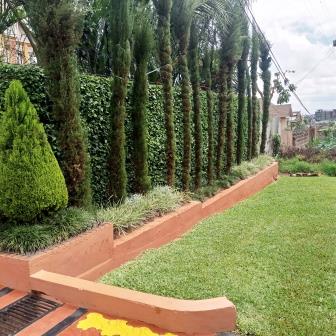Thinking of growing a hedge?
If you are dreaming of lush green hedge to add a touch of privacy and beauty to your garden, read on.
Hedges have been grown since ancient civilizations and surprisingly the reasons for which they were grown then have remained the same albeit with a few variations; to offer protection, provide privacy , keep the the livestock hedged in and lately as wildlife abodes.
Yet many of us struggle when it comes to growing hedges. Questions like what hedge plant to use, how high should the hedge get and the maintenance of the hedge can be taxing. If you are at this crossroad, this article is for you.


What is the Purpose of the Hedge
The purpose of growing a hedge will determine the plants you use, the height of the hedge and how you even grow the hedge. Do you want a screen or barrier for privacy? Or are you merely looking to add aesthetics to your garden with some ornamental hedge? Do you want a hedge to attract wildlife and at the same time act as a barrier? For instance, if you need a hedge to act as a security barrier, the best plant to use is kei apple, bamboo or yew which can form an impenetrable fortress.
What are the existing site conditions
The conditions prevailing at the site will influence what type of plants you will grow. How is the climate and does the soil drain well? Are there trees adjacent to the hedge that will cast shade ? Most hedge plants thrive well in full sun and partial shade and require well drained fertile soil. Find out the plants that will tolerate the prevailing conditions so that the hedge takes off at once.
How to Plant Your Hedge
Once you have identified the plants that you will use, it is time to get down to the real work now. Prepare the ground by clearing all weeds, debris, roots, and stones. As Crystal Gardens, below is our in-house style for planting hedges.

1. Dig a trench 18 cm wide and 18 cm deep running the entire stretch of the hedge.
2. Remove the topsoil and place it aside
3. Backfill with compost or manure up to half of the trench
4. Backfill with the topsoil leaving a gap of 5cm to the brim . This leaves a depression that will hold water when you water.
5. Arrange the plants.
When arranging the plants, space plants closer if you need a denser hedge and further apart if you want a more open hedge. Make sure the planting depth is at the same height as in the planting bag from the nursery.
Of course you can plant your hedge in the individual holes without using a trench but our method ensures that there is ample compost for continuous feeding of the hedge and moisture is retained for a longer time.
What Plants can You use for growing a hedge?
- Yew
- Boxwood
- Plumbago
- Duranta
- Arbovitae
- Pivet
- Hibiscus
- Oleander
- Bougainvillea
- Bamboo
This list is by no means exhaustive as many shrubs end themselves to hedge growing
How to maintain Your Hedge
Planting a hedge is one thing, keeping it growing and healthy is another. You can plant a hedge well but if you don’t keep it, you will not get the desired results.
Mulch.
Mulch your newly planted hedge to suppress weeds and prevent moisture loss. I recommend organic mulch as these decompose and feed the plants.
Pruning and kneading
Once your hedge establishes, prune branches to promote dense healthy growth. Always use sharp clean tools . Sometimes you only have to knead the hedge by pushing back into line branches or twigs growing sideways out of the fence to encourage thickening.
More importantly, trim any straggly, diseased or dead branches . Early spring or late winter is the best time to prune a young hedge.


Watch out for pests and diseases
Hedges can be prone to pest and disease infestation. Pests like aphids, scales and mealy bugs are common with hedges. Fungal diseases and root can also be a problem.. The cypress family is particularly vulnerable to aphid attacks and many hedges have been decimated by aphids in the past. The trick is to monitor your hedge scrupulously and nip the trouble in the bud when it emerges.
Conclusion
A well maintained hedge can add value to your property and enhance your living experience. It can offer privacy and keep the pets contained. It is not just a dull barrier. You can spice it up by adding flowering shrubs for seasonal interest. Alternatively, you can incorporate fruit berry plants to offer food and nesting for birds. What you need to understand is that growing a hedge is for the long haul; it will be a while before your hedge reaches its full potential but the rewards are worth the wait.


Leave a Reply